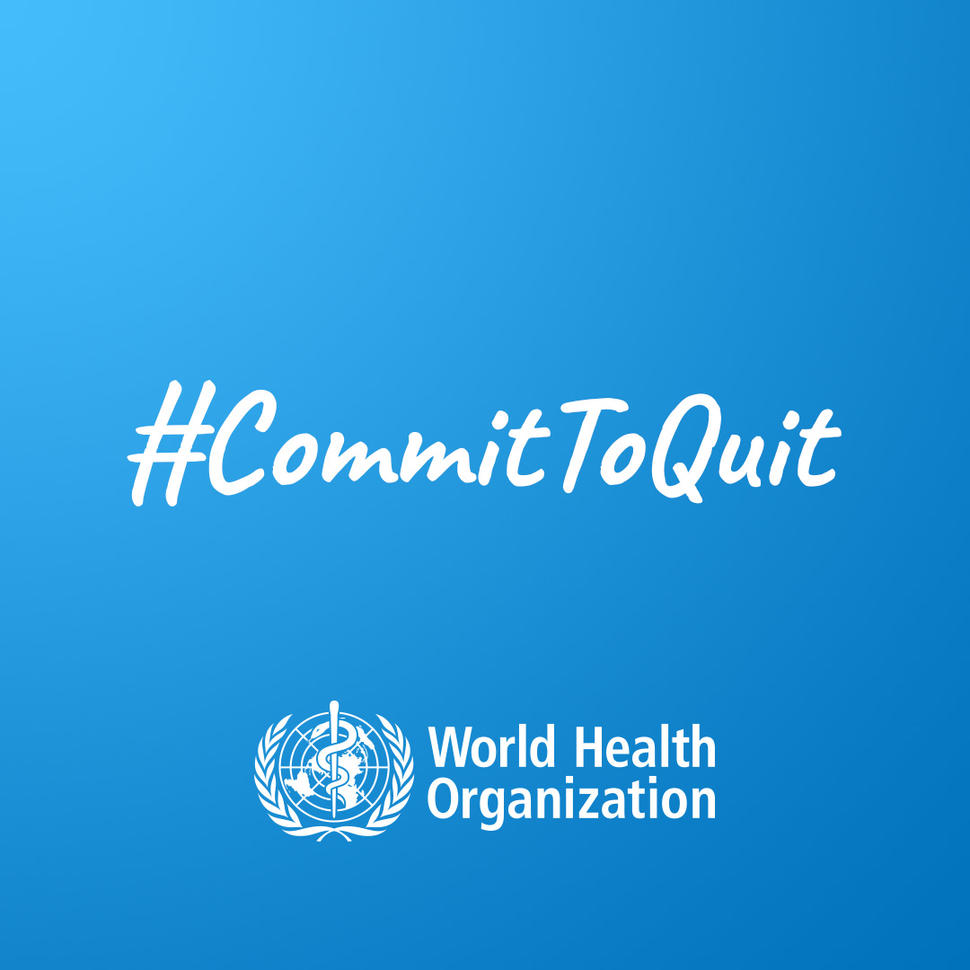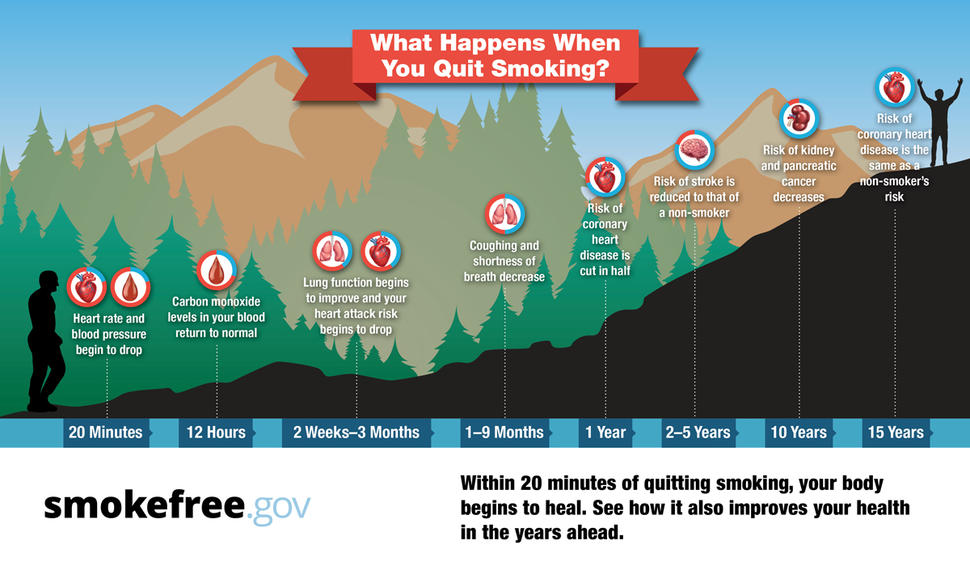Celebrating World No Tobacco Day 2021: Commit to Quit
, by Michele Bloch, M.D., Ph.D., NCI Division of Cancer Control and Population Sciences and Mark Parascandola, Ph.D., M.P.H., Center for Global Health
Tobacco use ranks among the world’s leading causes of death. Despite progress in reducing tobacco use, especially in high-income countries such as the United States, the global death toll is still enormous. The World Health Organization (WHO) estimates that more than 8 million deaths per year are attributed to tobacco use, including more than 1.2 million deaths among nonsmokers exposed to secondhand smoke. Because tobacco is a leading cause of cancer mortality, strong implementation of effective tobacco control measures is critical to reducing the global cancer burden. The WHO established World No Tobacco Day, celebrated each year on May 31, to raise awareness of the extraordinary health hazards of tobacco use. This year’s World No Tobacco Day theme -“Commit to Quit ”- is an opportunity to emphasize the importance of quitting and to encourage countries, health systems, and public and private organizations to assist the world’s 1.3 million tobacco users to quit.
The U.S. Surgeon General has found that, regardless of age or duration of smoking, quitting reduces the risk of disease and increases life expectancy. Furthermore, because quitting reduces the substantial financial burden of tobacco use, people who quit have more money to spend on food, housing, health care, children’s education, and other household needs. Quitting also reduces the risk that families will lose the earning power of working-age adults – often the “breadwinners” for families – through tobacco-related disease or death. As a result, quitting tobacco use benefits the individual, the family, and the community. However, quitting tobacco is often difficult. Many people who use tobacco began as children or adolescents, a time when the brain is still undergoing development and when nicotine exposure may facilitate later tobacco dependence [1]. Fortunately, there are many effective strategies to help tobacco users quit for good.
The goal of the World Health Organization’s Framework Convention on Tobacco Control (WHO FCTC) – the first international treaty negotiated under the auspices of WHO - is to improve global health by preventing and controlling tobacco use. Evidence-based policies advanced by the WHO FCTC are an especially powerful tool to promote quitting at the population level. As explained in NCI’s Tobacco Control Monograph 21, The Economics of Tobacco Use and Tobacco Control, published in 2016 in collaboration with WHO, “Tobacco control policies, such as increased taxation, anti-smoking media campaigns, and comprehensive smoke-free policies, increase the demand for tobacco dependence treatment and the rates of subsequent cessation.”
Research conducted over many decades and in many countries has established that significant increases in the excise tax and price of tobacco products is the single most consistently effective tool for reducing tobacco use. Among their effects, substantially higher tobacco taxes motivate tobacco users to quit and reduce both frequency and intensity of consumption among continued users. Moreover, evidence shows that robust tax policies can be even more effective in low- and middle-income countries (LMICs) and for low-income populations in high-income countries. However, most countries have yet to employ tobacco taxation to the full capacity recommended by WHO.
Anti-tobacco mass media campaigns also increase quit rates and use of smoking cessation quitlines and smoking cessation treatments. In the United States, the Centers for Disease Control and Prevention’s Tips from Former Smokers® campaign, which features the “stories of real people living with smoking-related disease and disabilities,” helped an estimated 1 million people quit smoking and helped reduce smoking-related healthcare costs by an estimated $7.3 billion between 2012-2018. Media campaigns are especially important in LMICs, where awareness of the health risk of tobacco use and resources for quitting are generally low.
Comprehensive smoke-free policies eliminate exposure to secondhand smoke, a cause of serious disease and death, including death from cancer, among nonsmokers. Smoke-free policies are especially beneficial to infants, children, and women, who are (in many countries) far less likely than men to smoke themselves. But the benefits of smoke-free policies are far broader; they foster social norms against tobacco use and facilitate quitting by spurring quit attempts among smokers and increasing the likelihood of successful cessation among those who try. The WHO FCTC requires Parties to the treaty to implement comprehensive smoke-free policies, and many have already done so. In the United States, an estimated 60% of the population is protected by comprehensive smoke-free laws.
In addition to policy levers, providing quitting assistance to tobacco users is both effective and cost-effective. Health care systems play a central role in promoting cessation and in providing tobacco dependence treatment. Every encounter with the health care system is an opportunity to screen for tobacco use and secondhand smoke exposure and offer help to quit. In addition to including interventions in primary care, quitting advice and treatment can be provided as part of health services for specific populations, including pregnant women, people living with HIV/AIDS, and people receiving treatment for tuberculosis, diabetes, and other chronic health conditions, among many others. Addressing tobacco use is also important in the context of cancer care because quitting can improve outcomes for cancer patients [2]. In 2017, the NCI launched the Cancer Center Cessation Initiative to help NCI-designated Cancer Centers routinely address tobacco cessation with their patients.
Telephone quitlines and digital health modalities are effective ways to dramatically expand the reach of the health care system. In the U.S., help to quit is available by calling 1-800-QUIT-NOW and through NCI’s Smokefree.gov initiative, in addition to resources available through states and localities. Quitlines and innovative use of technology, such as delivering cessation support through text messaging and mobile apps, have particular promise for LMICs and hard-to-reach populations given the strong penetrance of mobile phones worldwide.
Health care workers – physicians, nurses, dentists, pharmacists, and others - are important role models for tobacco-free norms and are often the people who deliver motivation and guidance to quit. However, far too many health care workers are themselves, tobacco users. A recent systematic review of studies conducted in 63 countries estimated that the overall prevalence of tobacco use among health care workers was 21%, including 31% of men and 17% of women. Health care workers who use tobacco are less likely to address tobacco dependence among their patients, and less likely to be effective in doing so.
World No Tobacco Day 2021 is accompanied by a year-long campaign - focusing especially on high-burden countries such as the U.S. - to help as many as 100 million tobacco users to quit. World No Tobacco Day is an opportunity for NCI to emphasize that, despite progress, tobacco use remains a leading cause of cancer death in the U.S., and around the world, and that quitting can be lifesaving, no matter the person’s age or duration of using tobacco. Countries that implement evidence-based policies and provide people who use tobacco with help to quit can expect to reap substantial benefits, including reduced cancer mortality, reduced health care costs, and improved economic status for individuals, families, and communities.

